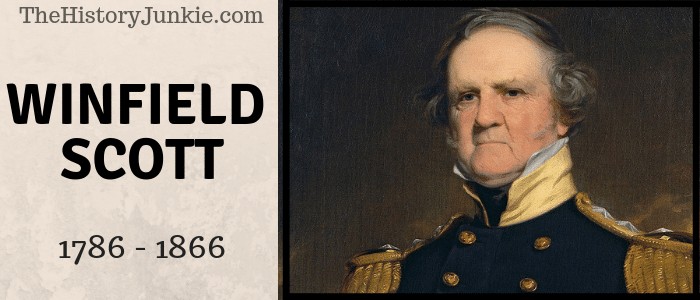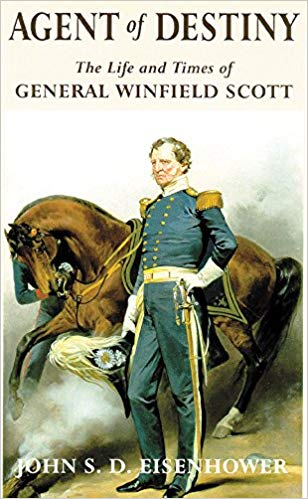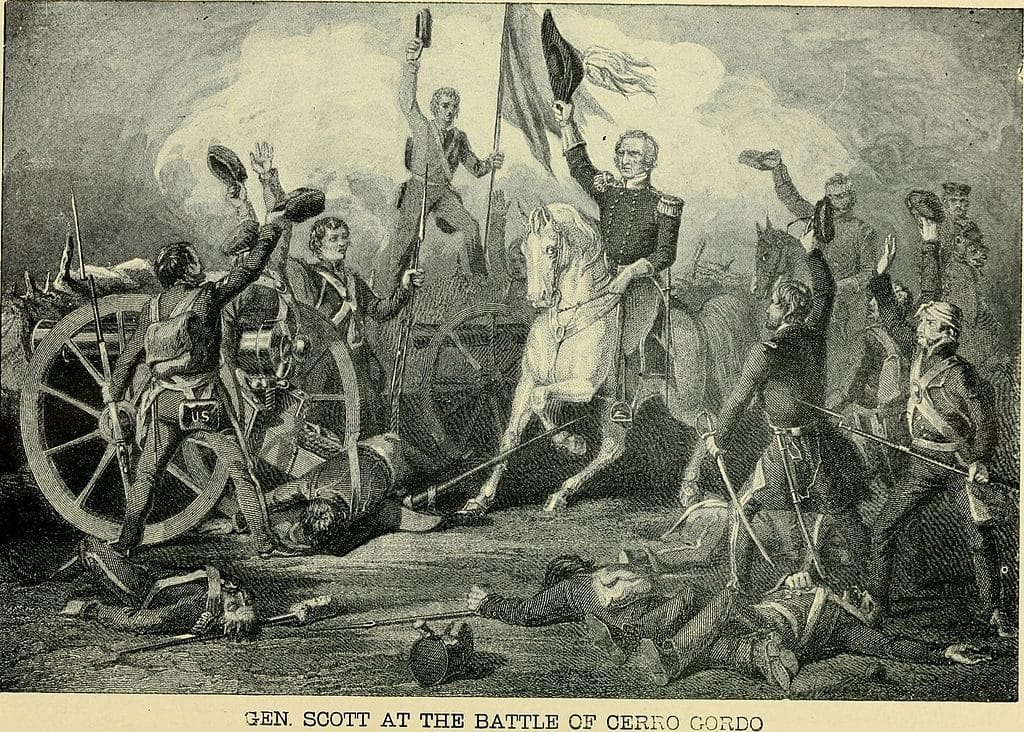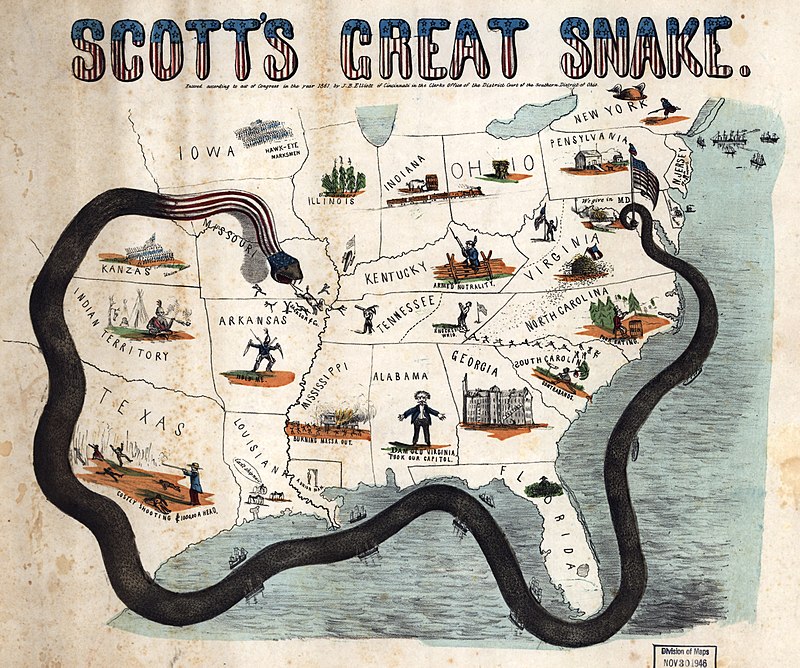Winfield Scott is recognized as one of the greatest military officers in American History. He served in The War of 1812, The Black Hawk War, Mexican-American War and was the senior officer at the outbreak of the Civil War. His plan, the Anaconda Plan, was used to defeat the Confederacy.

He served as Commanding General of the United States Army for twenty years. He served under seven different Presidents.
Early Life

Winfield Scott was born to William Scott and Ann Mason on June 13, 1786.
His father was a veteran of the American Revolutionary War and served as an officer in the Virginia militia.
At the age of six, his father died, and at the age of seventeen, Winfield Scott lost his mother.
The following year, after his mother's passing, he attended the College of William and Mary.
He did not stay long, as he left the college to study law under the attorney David Robinson. Within two years, he had attained admission to the bar.
During this time, he served as a corporal of cavalry in the Virginia militia near Petersburg. Although not officially mustered in, he served during the Chesapeake-Leopard Affair and led a detachment that captured two midshipmen and six sailors.[
After the action, Scott pursued his military career, but with War with Britain looming, he eventually abandoned his law practice in favor of a military career.
Military Career
Winfield Scott's military career would span from 1807 - 1861. He began as a militia corporal and ended up becoming the 3rd Commanding General of the United States Army.
War of 1812: During the War of 1812, he was a young officer who served with much distinction. He participated in some of the worst losses of the war and witnessed the bloodiest battle of the entire war. He saw action in the following engagements:
- Battle of Queenston Heights
- Battle of Fort George
- Capture of Fort Erie
- Battle of Chippawa
- Battle of Lundy's Lane
By the end of the War of 1812, Winfield Scott had distinguished himself as a rising star in the United States Military.
He would take his experience to the frontier, where he fought against the Seminole Tribe in the Seminole War and earned high marks during the Black Hawk War.
When President Andrew Jackson expelled the Cherokee from Georgia, he placed Winfield Scott in charge of the military operations.
During this time, many Cherokee Indians were mistreated, their rights violated, and died due to the tactics employed by the military. Unfortunately, it was a different time with different sentiments. The removal became known as the Trail of Tears.
When the Mexican-American War was declared, Winfield Scott was considered a senior officer and was given command by President James Polk. However, Scott's conflict with Polk resulted in him being replaced by General Zachary Taylor.
President Polk then gave Winfield Scott another command. He served with much distinction. He participated in the following actions:
- Siege of Vera Cruz
- Battle of Cerro Gordo
- Battle of Contreras
- Battle of Churubusco
- Battle of Molino del Ray
- Battle of Chapultepec
- Battle for Mexico City

After the war, he became a popular political figure and would be nominated by the Whig Party for President multiple times.
His military career took a backseat to his political career for a decade. Although he never won a major office, his reputation as a military man was never lost. He would serve as an advisor to multiple Presidents, despite their political parties. He also participated in a few diplomatic missions.
When the Civil War broke out, Winfield Scott was an old man and unable to serve on the battlefield. He recommended that the Union place Robert E. Lee as Commander-in-chief of the Union Army. He also developed a plan known as the Anaconda Plan.
Robert E. Lee famously refused the command and joined the Confederacy.
The Anaconda Plan would be used throughout the war and proved to be an effective tactic against the Confederacy.

Later Years and Death
Winfield Scott retired from the military on November 1, 1861. General George McClellan succeeded him as General-in-chief. Even though he was retired, his military advice was still sought after. There were many instances where Abraham Lincoln consulted Scott for advice on military tactics.
Scott's Anaconda Plan was followed. General Ulysses S. Grant eventually took control of the Mississippi River at Vicksburg. With the Union Blockade, the North continued to destroy the Southern economy and their ability to wage war.
Even with all the stories of valor and great Confederate Generals, the war eventually became a war of attrition, and the South could not sustain itself.
Scott lived long enough to see the country he helped expand be unified. After retirement, he resided at West Point, where he would eventually die.
He died on May 29, 1866, at 79 years old.
